Buy HD e-Books & Text —— www.ccelian.com
the Art of Nao
Scrolls: 1 . 2a . 2b . 3 . 4 . 5 . 6 . 7 . 8 . 9 . 10 . 11 . 12 . 13 . 14 . 15 . 16 . 17 .
18 . 19 . 20 . 21 . 22 . 23 . 24 . 25 . 26 . 27 . 28 . 29 . 30 . 31 . 32 . 33 . 34 .
< Scroll 23 ____________________________________________________ Scroll 25 >
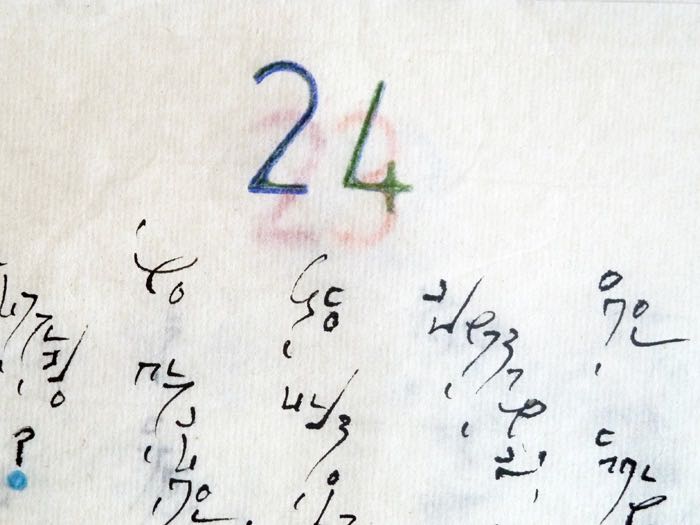
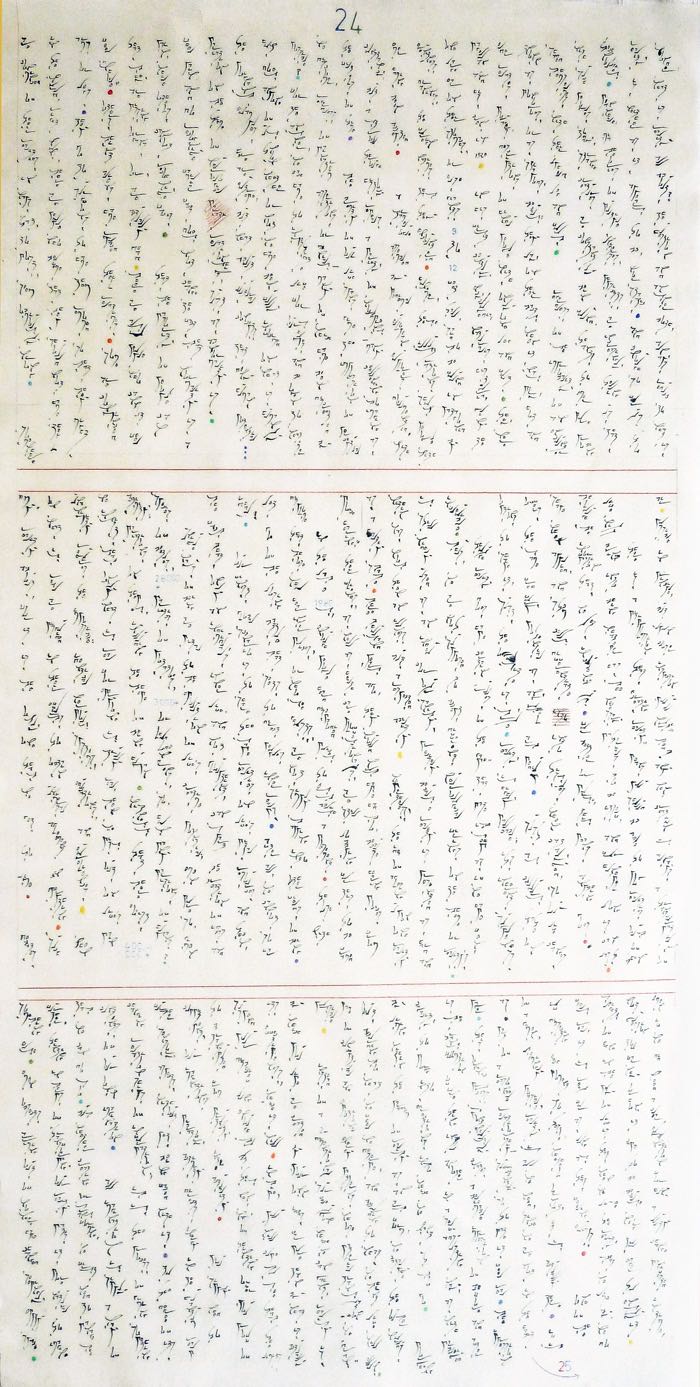
66.5 x 132 cm / 26 x 52 inches
__________________________
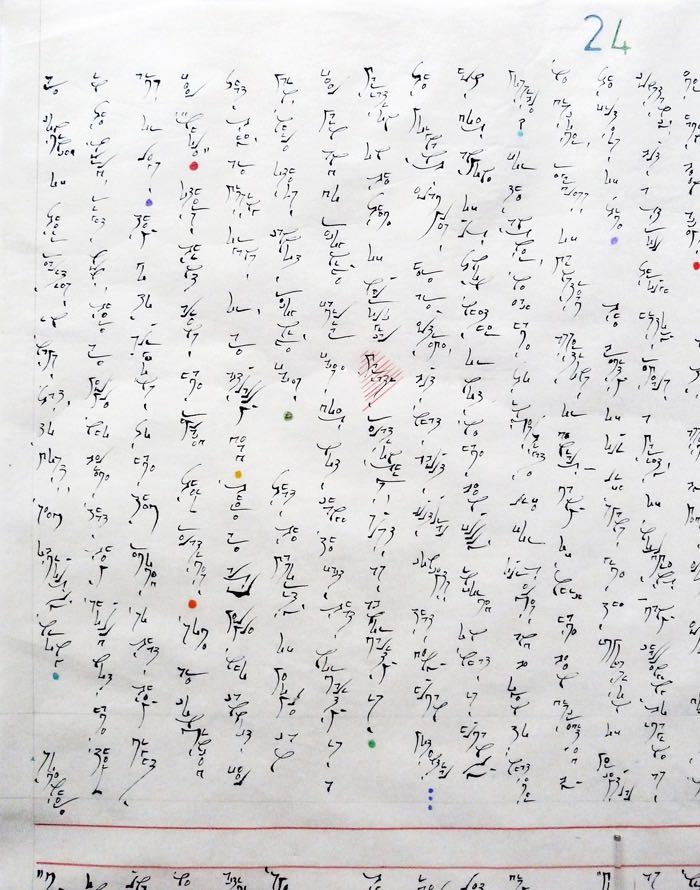
Scroll 24-section 1
> are convinced of their reality in ways that, to most, seem obviously wrong.
Somewhere in the world, right now, there are people who believe that they should not have their arms or legs. They go to surgeons to have them removed so that they might feel “whole.” Others think aliens have replaced their relatives. Some are convinced that they are missing organs, or are actually dead. There are also people who cannot feel pain, while others cannot recognize faces.
That the majority of people can feel pain and do recognize familiar faces does not change the fact that normality is a variation on the theme of neurological relationships, just as abnormality is.
The poignant examples here are extreme, but what about cultural concepts that deny human potential? How does anyone of us know whether or not we have been fully informed on what is humanly possible? For the answer, we each have to investigate life for ourselves and be open to whatever we discover, regardless of mainstream assertions or denials—many of which have been discredited by the filters of time.
__________________
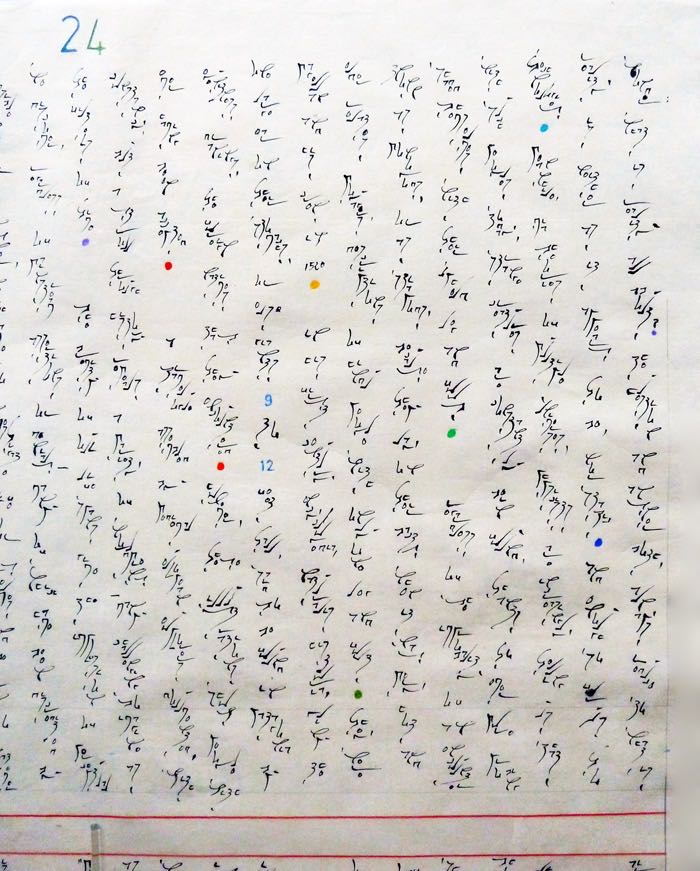
Scroll 24-section 2
The brevity of our life spans give the impression of perceptual constancy, but a stroll through history reveals a variety of worldviews—many challenging to imagine as ever having been accepted.
A travelogue assembled by Medieval European explorers documented, with eyewitness drawings, the foreign natives that they encountered. However, these illustrations show people with one large ear on their stomachs, or else giants 9 to 12 feet tall, said to be found in Patagonia by Magellan and his crew in 1520.
In his first century encyclopedia, Naturalis Historia, Pliny the Elder relates voyagers’ descriptions of Hindu people with only one leg and foot. They were known as Monopods, or as Skiapods, because they lay on their backs when it was very hot and shaded themselves with their upheld leg and foot.
Regardless of the improbability of an encounter with such peoples today, strange creatures are constantly being found, thanks to ever more probing technologies. Meanwhile, via theories of multiple universes, physicists are increasingly telling us that reality is neither as it appears to be, nor static. And enough so for us to wonder: what is reality all about? The question and answer both, always reduce to what is >
_________________
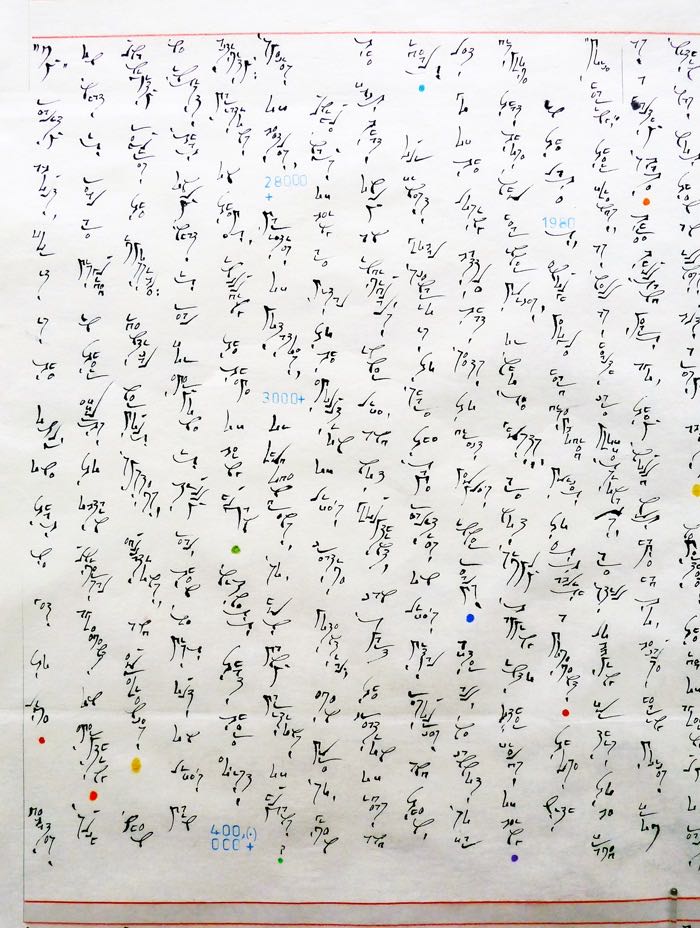
Scroll 24-section 3
> “my” reality about, for it is the only one we ever get to live.
Debates on what is real are misguided in their efforts to obtain universal agreement on everything. Such unanimity requires the impossible: identical nervous systems, educations, and experiences.
When we insist that only what is real for everyone is truly real, then we miss out on life’s main activity: variations on themes, including the theme of being human. Witness that there exist 400,000+ species of beetles, 28,000+ varieties of potatoes, 3,000+ of rhododendrons, so, how many variations of humans?
Unique ways of being are vital to the evolution of life’s creative potential; even more so, given the fact that only an individual’s inner life, and not groupthink, can spark the creation of ideas and ideals.
Our finest global scenario is to share the same realities on life’s vital resources and then, let go of the losing battle that seeks to direct people’s inner realms. After all, we cannot so far disprove that those who hear inner voices, or who see ghosts, are not simply tapping into other fields of being.
In the late 1980s, enough people heard disembodied voices to establish a movement. Those with "voice hearing,” their friends, as well as health care professionals, are still lobbying for this to be framed as a healthy state.
___________________
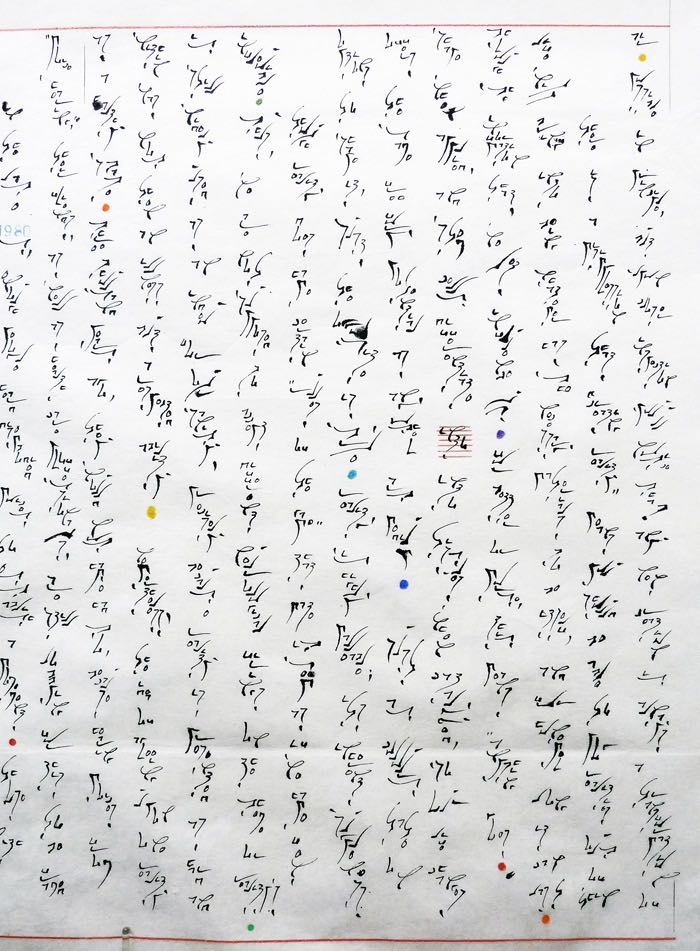
Scroll 24-section 4
Three thousand years ago, they would not have had to, because hearing voices from within was not then an illness, but a respected ability.
Nevertheless, the idea of agreeing upon one reality is still widely used as an index for our sanity, precisely because reality is presented as hard and inflexible. Thus, we are not supposed to accept different neurological firings on the theme of reality’s variations.
Though reality does have certain “rules of the game” that make it seem as if we have few options to shape it, just the opposite is true. Reality is highly malleable; its inherent suppleness offers the same freeform potential as any other art medium.
Just as colours take on shape when applied, and stem cells differentiate into tissues when catalyzed, so our life changes through the information that we let influence us. For better or worse, this means “anything goes.” Life will bring into being whatever has the necessary materials to be itself, and for however long it can last.
There is a misimpression that “creating reality” means you should be able to pop realities out of thin air. Possible in principle, but upon closer inspection you’ll notice that any new creation is always a transformation of >
__________________
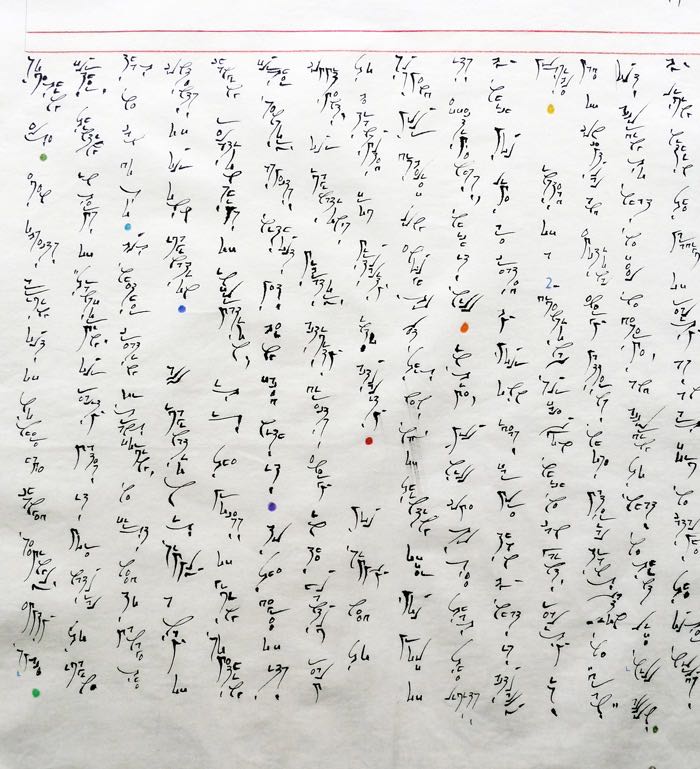
Scroll 24-section 5
> something else. Even objects arriving out of nowhere have changed seemingly empty space. Further, thinking in terms of “transforming” our reality makes it more natural to imagine that we can do so. But whether creating or transforming, we first need to manage the contents of our own imagination.
All imagination is simply a way of changing relationships of information; it is the process of giving something further sensory aspects without yet being faced with it. To the degree of its commitment, our imagination’s vibratory activity directs energy in the quantum realm to be transmuted from virtuality into actuality.
You simply need to suspend your disbelief long enough to let this new way of thinking offer proof of its effectiveness, which it will. In time, you will come to see that the limits by which you live are created by your own ideas far more than by what is actually possible.
Instead of a 2-Dimensional surface upon which we can paint, reality is made of conceptual and emotional energy patterns whose material forms we “draw” out according to what we feel we deserve, and according to what we think life will allow.
__________________
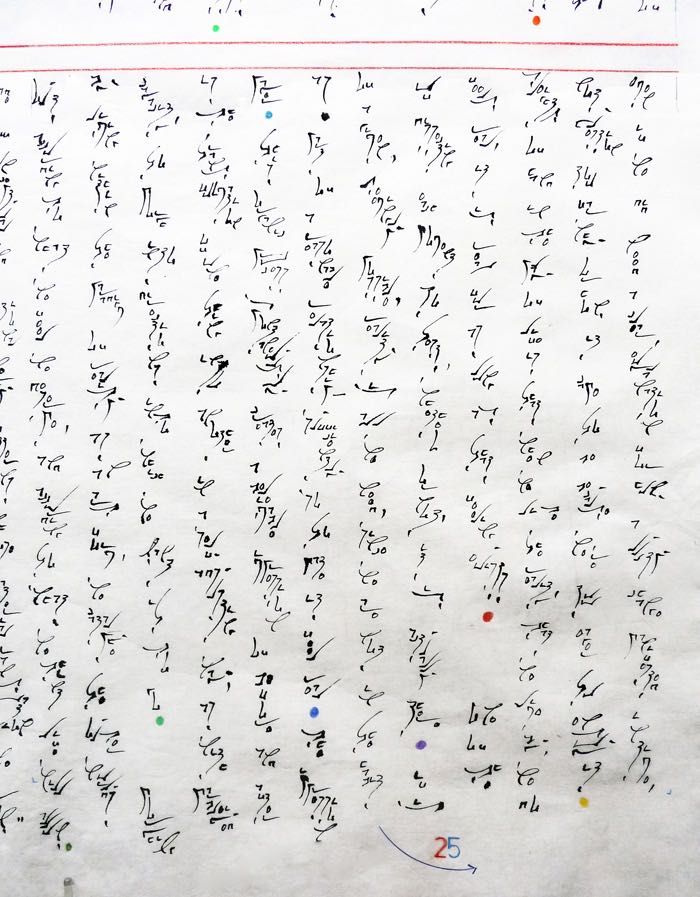
Scroll 24-section 6 — End of Scroll 24
By living within the paradigm of reality as an art form, we catalyze the outer world’s capacity to morph into directions in which we want it to go.
Morphing is the transformation of one thing into another in a self-adjusting way, as with marbleized paper. This organic process spontaneously creates a believable impression of before and after as part of a reasonable relationship—sufficiently so to make something feel real. The impression of a given, seemingly possible, reality is all we need, since we are not in the habit of dissecting each moment to test whether or not it is actually there. If it feels real, it is real for as long as that feeling exists.
One of the sleights of hand in the play of life is that when we like the reality that we live by, we do not question too far why, or how, it came to be because we’re too eager to enjoy it. Even if we did need a clear explanation for how a lucky change manifested in time, >
< Scroll 23 ____________________________________________________ Scroll 25 >
Scrolls: 1 . 2a . 2b . 3 . 4 . 5 . 6 . 7 . 8 . 9 . 10 . 11 . 12 . 13 . 14 . 15 . 16 . 17 .
18 . 19 . 20 . 21 . 22 . 23 . 24 . 25 . 26 . 27 . 28 . 29 . 30 . 31 . 32 . 33 . 34 .
Buy HD e-Books & Text —— www.ccelian.com
© C.C. Elian 2010 - 2016